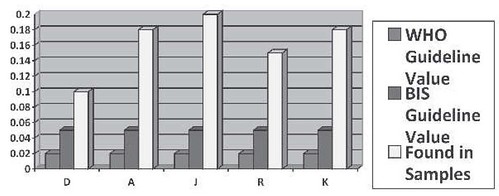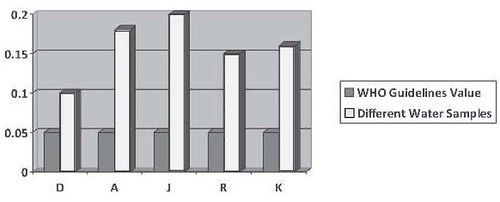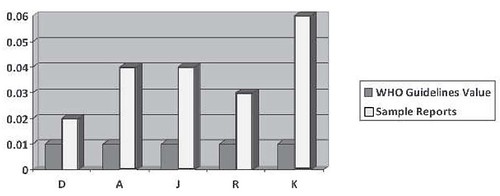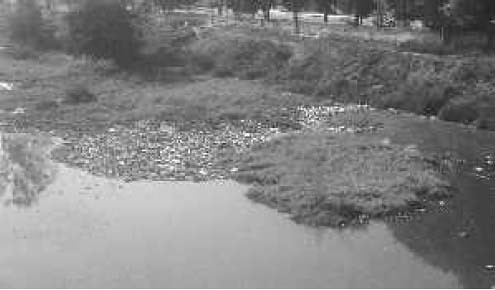Source
River Kali East The Saga of Death & Towards Revival, February, 2010
The river passes through almost 1200 villages and sub-urban areas and was being used for various domestic purposes especially for irrigation throughout its course. Its water was considered to be good for irrigation and better suited to the crops than the ground water. This was due to certain minerals found in the region near to its source and all through its course. The water thus has been reported to be better suited for irrigation and drinking purposes than the underground water. Thus it worked towards conservation of ground water which is being exploited today at an unwarranted pace.
Mr. Sunder Soni, a 64 year old man in Village Aurangabad located on the catchment of the river was reported saying, “हमने तो कभी ट्युबवेल लगाया ही नहीं था, काली का पानी ही एकदम साफ था ये तो कुछ पिछले सालों में हालत इतनी खराब हो गई है कि अब तो नीचे से भी पानी गंदा ही आता है।”(We never installed tubewells, the water of Kali was clean enough, it is only in the recent years that the situation has worsened and even the underground water is dirty.)
Another specific use which the river water had because of the minerals found in the soil near its origin is of curing the Kali Khasi (dry cough). Its water was primarily suggested by the doctors and Vaidyas from faraway places as a cure for cough which was found untreated by medicines. It was also popular as a catalyst in the cure for other respiratory diseases like Bronchitis, Lung Infections and alike. Thus looking back twenty years down the line, the river water had medicinal qualities which were certainly a boon for the residents of theRegion.
Shri Krishan Kumar S/o Late Shri Moolchand Sharma, also a popular vaidya of Lawar was quoted as saying “पिताजी तो इसके पानी से दवाईयां बनाते थे मैंने तो खुद कितनी बारी बोतलों में पानी भर कर लाकर दिया है लेकिन अब तो देख कर तरस आता है” (My father use to make his medicines using the water of River Kali, I have myself brought water from the river filling bottles, but now its pity to look at the same river.)
The River Water was used for domestic purposes like even drinking as it was considered to be lashed with minerals. The ill cattle and livestock was particularly taken to the river to consume its water and it was a widespread belief of the villagers that the river cures a lot of diseases as it carries the water for the Holy River Ganges.
The river being a tributary of the sacred Ganga, and its water so clean and considered blessed, the residents of the region lying on its catchment could relate to it being associated with Ganga and equated a lot of value to it and bathed in the river for good offerings.
Its a pity to look at the river today. The turbidity of the river is so high that the base of the river which was well visible around two decades ago, could not be seen today even using the scientific instruments. Justifying its name “carrying the black water”, its not only unfit for any domestic usage but is also unfit for irrigational purposes or even for the animals.
The numerous species of birds categorised as migratory and inhabiting the region particularly during winters were a common sight throughout the course of the river but with The Kali getting to exhibit a soulless body carrying just industrial waste its disdainful to note that the birds are not to be seen anywhere near the expanse of the river. In fact it has been reported in the past that the population of these bird species have also been affectedby the consumption of river water. The amount of heavy metals present in the river water proved consumption to be nothing but fatal.
The graphic representation of different heavy metals gives a clear idea of how these metals have housed not only in the river but has also leeched to the underground aquifers and are a serious threat to the health of the people dependent on the underground water for their domestic and other uses. A detailed report is also attached herein as an Annexure herein.
 Lead Content in different water samples-
Lead Content in different water samples-D- Village Dedwa A- Village Aurangabad J- Jaibheem Nagar R- Rajvansh Vihar K- River KaliAll values in mg/l.
The quantity of lead found in the samples is much above the allowed levels. Lead interferes with a variety of body processes and is toxic to many organs and tissues including the heart, bones, intestines, kidneys, and reproductive and nervous systems. It interferes with the development of the nervous system and is therefore particularly toxic to children, causing potentially permanent learning and behaviour disorders.
 Chromium Content in different water samples-
Chromium Content in different water samples-D- Village Dedwa A- Village Aurangabad J- Jaibheem Nagar R- Rajvansh Vihar K- River KaliAll values in mg/l.
Chromium is a heavy metal whose presence in the drinking water can lead to some severe diseases and illnesses which can prove to be fatal. It affects different organs in the body and basically attacks the stomach and the tissues, thus leading to organ failures.
Cadmium and its compounds are extremely toxic even in low concentrations, and will bioaccumulate in organisms and ecosystems. With heavy metals like cadmium present, the drinking water is nothing but slow poison.
 Cadmium Content in different water samples-
Cadmium Content in different water samples-D- Village Dedwa A- Village Aurangabad J- Jaibheem Nagar R- Rajvansh Vihar K- River KaliAll values in mg/l.
 Iron Content in different water samples-
Iron Content in different water samples-D- Village Dedwa A- Village Aurangabad J- Jaibheem Nagar R- Rajvansh Vihar K- River KaliAll values in mg/l.
As the graph clearly shows that even iron is present in quantities much more than the allowable limits. The first indication of iron poisoning by ingestion is a pain in the stomach, as the stomach lining becomes ulcerated. This is accompanied by nausea and vomiting. The pain then abates for 24 hours as the iron passes deeper into the body and damages internal organs, particularly the brain and the liver, and metabolic acidosis develops. The body goes into shock and death from liver failure.
The tests conducted by the Central Ground Water Board, Ministry of Water Resources, Union of India in the year 1999 reported presence of heavy metals in huge quantities in their report titled Chemical quality and pollution status of ground water in and around areas of Kali River (East), Uttar Pradesh and Pollution in Kali Nadi (East) and its environs in parts of Meerut and Ghaziabad Districts, Uttar Pradesh. This is a clear evidence of a debacle in the happening. These tests have been conducted at various places and samples collected from marginable distances in order to check the over-all quality of the river instead of getting sabotaged by a particular event like a drain emptying into it.
The quantity of heavy metals present exceed the limits set by Bureau of Indian Standards (BIS) and World Health Organisation (WHO) to unimaginable limits as shown by the graphs and are thus a grave threat to the ecology.
The reports are not shocking at all as the colour and odour of the river indicates that such scientific tests were just a confirmation.
 This study sampled a limited range of heavy metal parameters. The presence of these metals, and their high level of exceeded levels, suggest that a wider range of toxiccontaminants are likely to be present within the drinking water consumed by the residents of localities on the catchment of this river, and as such, the chemical composition of this drinking water is worthy of further scientific investigation. It becomes clearer with the heavy metals also present in the underground water being extracted through different sources in localities at the catchment of the river.
This study sampled a limited range of heavy metal parameters. The presence of these metals, and their high level of exceeded levels, suggest that a wider range of toxiccontaminants are likely to be present within the drinking water consumed by the residents of localities on the catchment of this river, and as such, the chemical composition of this drinking water is worthy of further scientific investigation. It becomes clearer with the heavy metals also present in the underground water being extracted through different sources in localities at the catchment of the river.It is clearly evident looking at the above report that the river water carries devastating amount of heavy metals, much above the allowable limits. It has clearly beenestablished in the table below, about the ill-effects of these heavy metals on the human population. Though not put in measures, but such an exploit has certainly affected the ecology and biodiversity of the region to wondering scores as well.
 The following chapters would be discussing the health hazards in great detail when it would be illustrated with clear statistics that other than the scientific testing of the water, a corollary can also be drawn through the survey conducted on the health aspect of the residents of a village based on the catchment of the river. The presence of heavy metals in the river water is certainly taking a toll on the lives of the residents banking on the river.
The following chapters would be discussing the health hazards in great detail when it would be illustrated with clear statistics that other than the scientific testing of the water, a corollary can also be drawn through the survey conducted on the health aspect of the residents of a village based on the catchment of the river. The presence of heavy metals in the river water is certainly taking a toll on the lives of the residents banking on the river.The river which was a boon for the region sometimes back has now become a bane due to the irresponsible human activities. It now happens to be a blot on the map of the Western Uttar Pradesh. It is a perfect example of unwarranted water pollution of a fresh water source.


